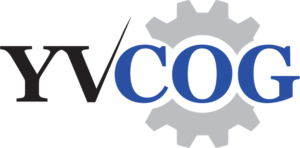Homeless Planning and Policy Council Information
This page has been created to help new members or anyone interested in the Homeless Planning and Policy Council (HPPC.) The HPPC is a countywide consortium of nonprofit agencies, businesses, community groups, and government agencies, as well as homeless and formerly homeless people. The group identifies critical gaps in service and plans for solutions.
The HPPC meets regularly to discuss community issues related to homelessness, best practices and opportunities for collaboration. Meetings are open to the public and new members may join at any time. Meetings are held the second Tuesday of every other month, from 10:00 a.m. – 11:30 a.m. at locations to be determined, excluding March and September. March and September meetings will be held in the Lower Yakima Valley. Please keep checking the meeting calendar on the Home page for updated meeting location information.
Homeless Planning and Policy Bylaws (currently being revised)
Commonly used Homeless Acronyms
Homeless Definitions
Yakima County’s 5-year Homeless Plan
HPPC Membership Roster
HPPC Roles and Responsibilities
- Develop, implement and annually update as needed a comprehensive countywide 5 year homeless plan.
- Make recommendations to the Yakima Valley Conference of Governments Executive Committee as to the expenditure of public funds to support strategies identified under the 5 year plan and to address emergent needs.
- Regularly review and evaluate homeless and housing data to determine the effectiveness of the local strategies and objectives identified in the 5 year plan.
- Establish performance outcomes and targets to measure and evaluate the effectiveness of funded programs.
- Establish and publish a transparent funding distribution process to solicit, screen, review, score and rank potential projects.
- Assist YVCOG in its role as the “Collaborative Applicant” for the HUD Continuum of Care (CoC) program by annually reviewing, scoring and prioritizing new and renewal projects.
Funding Sources for Homeless Services in Yakima County
- Local Homeless Filling Fee Revenue Est. 2016 = $700,000
- Consolidated Homeless Grant Program (CHG) 2016-2017 (18 months) = $ 237,949
- Ending Family Homelessness (EFH) 2016-2017 (18 months) = $65,727
- Housing & Essential Needs (HEN) 2016-2017 (18 months) = $1,028,926
- Emergency Solutions Grant (ESG) 2016-2017 (18 months) = $338,614
- HUD Continuum of Care Grants (CoC) Est. 2016 = $729,224
- Emergency Food & Shelter Program (EFSP) Est. 2016 = $125,000
Total = $3,225,440
*YVCOG does not receive funding directly but has oversight responsibility
Coordinated entry
Coordinated Entry is a process developed to ensure that all people experiencing a housing crisis have fair and equal access and are quickly identified, assessed for, referred, and connected to housing and assistance based on their strengths and needs.
Coordinated Entry Process
Coordinated Entry Flyer
Project Homeless Connect
At each PHC event, a person experiencing homelessness is able to receive assistance from multiple service providers, all under the same roof. Because of this one-stop-shop model, what often takes months to accomplish can be completed in one day. From employment counselors to mental health professionals, to housing assistance programs, our goal is to ensure participants have all the tools necessary to rebuild what they have lost and move forward.
What is the Point In Time count and why do we do it each year?
The HPPC conducts a county-wide “one-day homeless count” during the same week once each year. The count is known as the annual Point in Time (PIT) count. Many community partners and volunteers help with the PIT.
PIT provides a statistical snapshot of homelessness in our community and helps us understand trends and needs. It is required by the U.S. Department of Housing and Urban Development and by Washington state law.
Point In Time Definitions
Unsheltered: Living in a location not meant for human habitation. Examples include outside, in a car, or in a tent or trailer with no running water or sanitation.
Emergency Shelter: A location designed for staying up to 90 consecutive days. Services typically include sleeping space, access to meals and showers, and case management.
Transitional: A type of time limited housing program support typically lasting up to 24 months. Participants have to move at the conclusion of their time in the program.
Chronically homeless: Individuals or families who have been homeless for one year or longer or have had four episodes of homelessness within the last three years and the individual or one family member has a disabling condition.
Community Indicators
Yakima’s 211 Call Center, which provides Information and Referral services for 15 Counties in Central Washington, reported over 11,000 calls for assistance from Yakima County in 2013-2014.
Four of the top 10 requested resources by callers were related to housing affordability
#2 Utility Bill Payment Assistance
#5 Rent Payment Assistance
#8 Permanent Housing
#10 Emergency shelter/motel voucher
The top housing related gaps in services (no assistance available at time of call)
#1 Rent Payment Assistance
#4 Utility Bill Payment Assistance
Out of Reach Report
The standard measure used for determining affordable housing is 30% of a person’s monthly income going toward housing costs.
- The percentage of renters in Yakima County is 37%.
- The Fair Market Rent for a two bedroom apartment in Yakima County for 2015 is $732.
- Rent affordable at minimum wage $485
- The average renters wage in Yakima County is $9.64
- Rent affordable at renters wage is $501.
- 51% of renters are unable to afford a two bedroom home in Yakima County.
- A worker must make $14.08 an hour or work 58 hours or 1.5 jobs a week at renters wage in Yakima County to afford a two bedroom home.
2015 WA Housing Needs Assessment
The standard measure used for determining affordable housing is 30% of a person’s monthly income going toward housing costs.
- Median Family Income (MFI) is $51,200
- 18,975 low wage renter households in Yakima County
- 4,075 subsidized housing units in Yakima County
- Number of affordable and available housing units per 100 households for families at 0-50% of MFI is 39 leaving a gap of 61 units
- 69.3% of owner occupied housing stock is affordable to households at FMI
- 8,430 renters are consider cost burdened in Yakima County paying 30-100% of income toward housing costs
- 10,910 home owners are considered cost burdened in Yakima County paying 30-100% of income toward housing costs
Types of Rental Housing
Fair Market Housing – Yakima
For more information contact: Crystal Testerman, homeless program manager, or Will Denton, homeless program coordinator, at 509-574-1550


